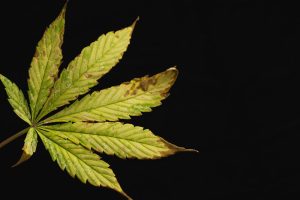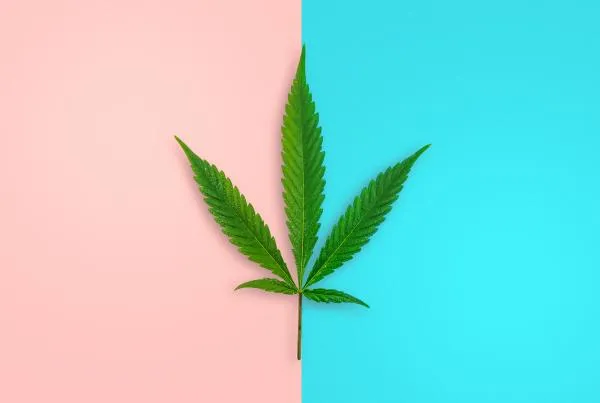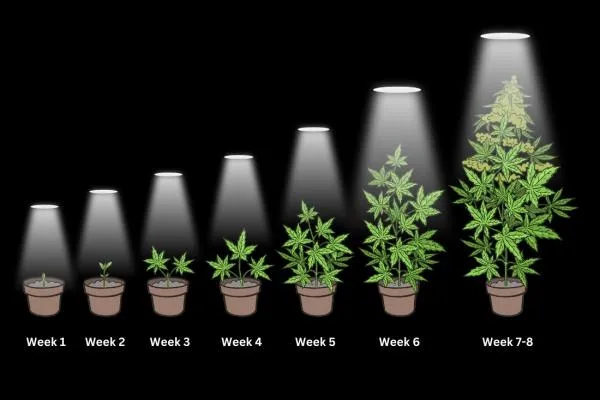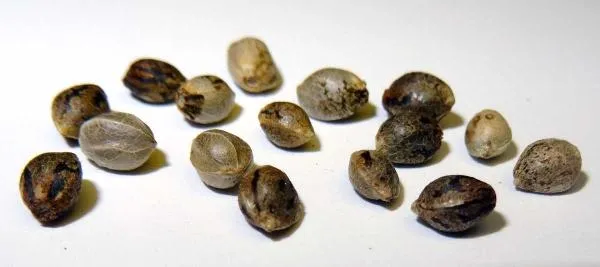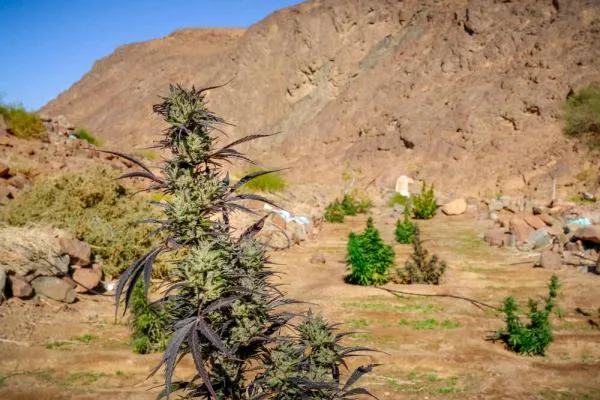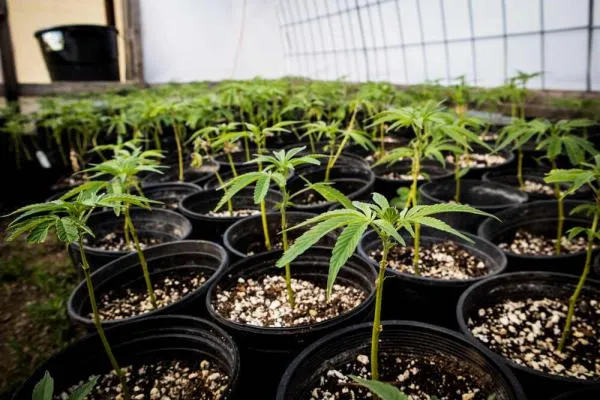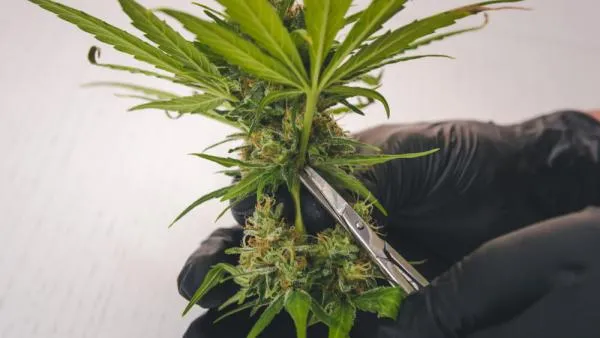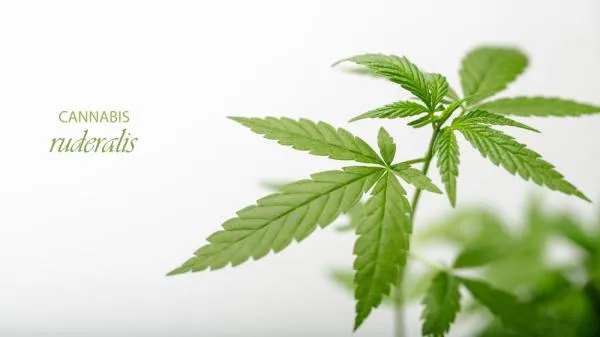Growing weed is easy, right?
All you have to do is grab a few of the amazing MSNL seeds, a bag or two of dirt, water them every now and then, and bang - next stop, bud city.
And sure, with a bit of luck and just the base level of cannabis cultivation knowledge, growing your very own crop of the dankest, stankiest sticky-icky is definitely possible. But, at some point (probably pretty early on) in your ganga-growing journey, you are bound to run into an issue or two.
And what is the most common problem faced by new growers?
Nutrient burn, closely followed by overwatering.
Don't worry, it happens to the best of us, and the best way to really learn from your mistakes is to get out there and make them. In this guide, we'll walk you through exactly what nutrient burn is, how to identify it, and most importantly - how to fix it.
What is Nutrient Burn in cannabis?
All plants need nutrients to survive. Think of them as the plant's version of breakfast, lunch, and dinner.
But what happens when you eat at McDonald's for breakfast, Taco Bell for lunch, and then round out the day with a six-pack and a pizza? Okay, maybe not the best analogy - that sounds like a good time - but you get the idea. Too much of a good thing quickly becomes an issue.
Nutrient burn results from overfeeding your plants, nothing more, nothing less.
It's easy to understand why nutrient burn is the most common issue faced by growers just starting out, especially those who dive straight into hydroponics. We all want the best for our favorite green buddies, but boosting up the nutrient levels isn't necessarily the right move.
When we 'overfeed' our plants, they don't put on weight - the opposite, in fact. Overfeeding can cause a range of issues, and the symptoms can moonlight as other problems, so it's vital to know how to spot and address nutrient burn.
How to differentiate nutrient burn from other plant issues
Nutrient burn can easily be mistaken for other plant issues.
- Nutrient deficiencies, where the plant isn't receiving enough nutrients, can show similar symptoms, such as yellowing leaves and stunted growth. Check out our full guide to nute deficiencies to help with identification.
- Light burn, where the plant is exposed to too much light, can also cause yellowing leaves and burnt or bleached spots. Light burn will cause the upper leaves to bleach, whereas nute burn will usually affect the lower, older growth first.
- Pests, mold, and disease can also cause similar symptoms, so it's important to understand exactly what nutrient burn is and how to identify it accurately. We have a whole blog series covering these issues to help you diagnose and address them.
So, how do you accurately identify nutrient burn?
You have to know what to look for - let's take a closer look at the tell-tale signs.
Symptoms of Nutrient Burn in cannabis plants
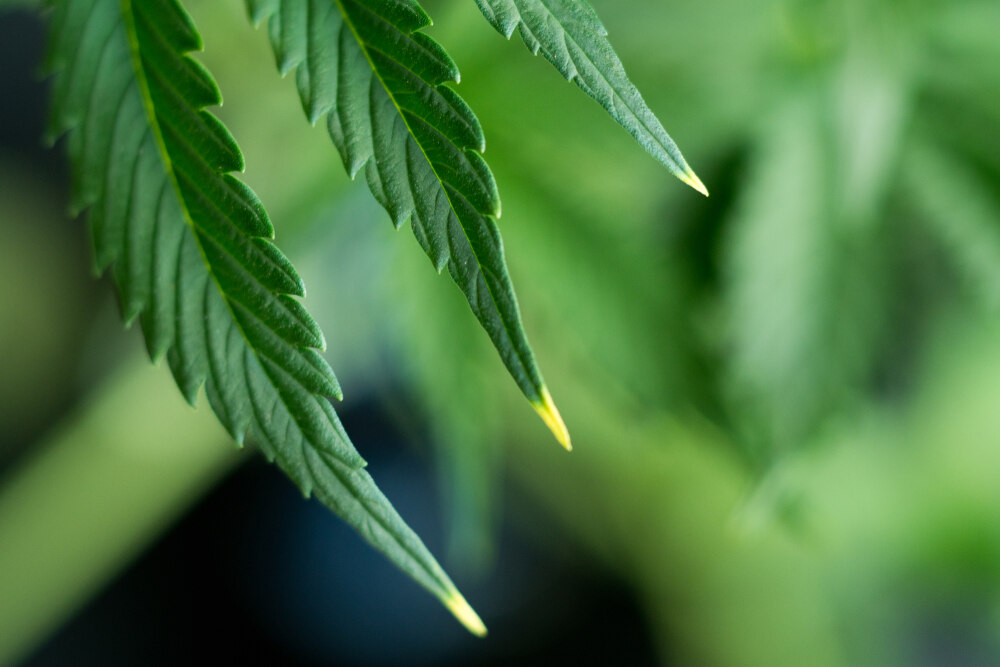
Visual signs of nutrient burn in the leaves (and sometimes buds)
- The very first noticeable change, which most new growers confuse for a sign of a healthy, happy plant, is overly deep green fan leaves. At first glance, this might seem like a good sign - after all, who doesn't want their plants to be lush and green? But in reality, an overly dark green color is a sign of nutrient overload.
- Within a few days, these darker green leaves will begin to take on a slightly burnt, crispy appearance around the edges.
- As nutrient burn progresses, the yellowing will become more obvious, spreading from the tips of the leaves towards the center.
- The leaves will start to warp, usually upward and inwards, and may even have a claw-like appearance.
- You may even see burnt or discolored 'rust' spots on the affected leaves, as the excess nutrients can also damage the plant's cells and cause tissue death.
- If your plants have begun flowering, the same can happen to the buds. Those initially fluffy, bright green buds can become dark and crispy, and the growth slows to a snail's pace.
How nutrient burn affects the overall plant health
An excess of nutes can quickly lead to a downward spiral of health issues.
- Stunted growth - the overabundance of certain nutrients can actually block the plant's ability to absorb the stuff they need. This is called 'Nutrient Lockout.
- Root damage - overfeeding can also cause harm to the delicate root system, which is hard to spot but can have long-lasting effects on the plant's health.
- Lowered yield - as mentioned, nute burn can also slow down bud growth exponentially, and kill the plant if not addressed promptly.
Early-stage vs. late-stage symptoms
The usual progression goes like this:
- Lower, older fan leaves become a much darker shade of green.
- The tips and edges of these leaves will turn yellow, then brown and dry out.
- The yellowing and browning moves from the leaf tip and edges towards the center, affecting more and more of the leaf as it progresses. 'Rust' spots can also appear.
- The leaf tips will then bend at weird angles, sometimes all the way to 90°.
- The entire leaf can start to warp inwards, becoming twisted and gnarled.
- The stems may change color towards the red/purple side of the spectrum.
- Sugar leaves and the buds themselves will yellow, crisp up, and then start to die-back.
Causes of Nutrient Burn in cannabis
Overfeeding and improper nutrient ratios
It isn’t known as the main beginner mistake for nothing, and it doesn't just come down to the quantity of nutrients you feed your plants, although too much is the primary cause. The ratio of nutrients is also crucial, as the different stages of growth require varying proportions of N-P-K (nitrogen, phosphorus, and potassium) and other essential micronutrients.
Impact of different growing mediums (soil, hydroponics, etc.)
Soil-grown plants are much less likely to suffer from nutrient burn than those in hydro systems, as soil acts as a buffer and is generally more forgiving when it comes to feeding.
The microbes in the soil are continually breaking down dead organic matter into nutrients the plants can use. It's a slow process, but it works because (AND THIS IS A MASSIVE OVERSIMPLIFICATION) these microbes only make available what the plant needs at any given time. They don't store or 'pump' excess nutes into the plants.
Growers using pure hydroponics or coco-coir will almost always use synthetic nutrients. This makes it much easier to overdose and is why soil is a more forgiving grow medium for beginners. It's easy to mess up the ratios and the pH of the nutrient solution, especially if you don't have the right tools, and when you do - BURN!
How pH imbalance can lead to nutrient burn
The importance of monitoring and adjusting the pH of your nutrient solution (or just water) cannot be overstated. Different nutrients are absorbed at different pH levels, and if the pH is too high or too low, the plant will struggle to take in the nutrients it needs, leading to deficiency or excess.
Always check the pH of your nutrient solution AFTER adding the nutes in. They will invariably alter the pH, and it's essential to get it in the right range for your plant's stage of growth. Soil grown plants like a pH of 6.0 to 7.0, and hydro/coco plants prefer 5.5 to 6.5.
The role of water quality and frequency in nutrient uptake
The plants need water to transport those nutes from the growing medium, through the roots, and up into the plant itself. The plants need regular access to good quality water, but not too often, otherwise, you'll run into the other main beginner issue - overwatering.
If you are hand watering, it's best to do so every day or two, but you can let the plants be your guide. It's fine (actually better than fine) to let the soil dry out between watering. If you have an automatic system, it's important to dial in the frequency and check regularly that the plants are getting enough water without being over-saturated.
If you are using tap water, a good practice to get into is to leave the water out (in a bucket or whatever) for a day or two before using it. This will give the chlorine and other harmful chemicals a chance to evaporate.
How to fix Nutrient Burn in cannabis plants
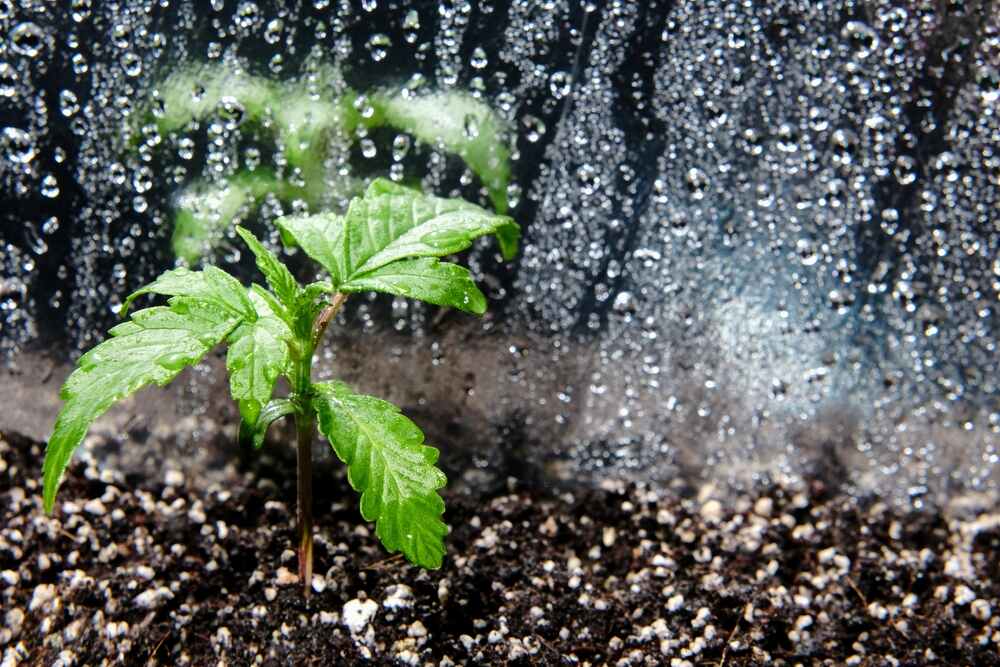
Flushing the growing medium to remove excess nutrients
If you suspect nute burn, the first thing to do is flush.
Flushing is easy, just make sure the water is at the correct pH. To flush, you simply flood the growing medium with plain, pH-adjusted water until it runs freely out of the bottom. Ideally, you want to see the water's pH come out close to what you put in. If it's way off, then run more water through until it stabilizes.
Adjusting nutrient levels to a proper balance
Soil growers can just continue with plain water, and let the microbes replenish the nutrients at their own pace. Hydro and coco growers will need to re-introduce nutrients but be sure to start with a lower dose and work your way back up. Keep an eye on the plant for any signs of nutrient burn and adjust accordingly.
Monitoring and adjusting pH levels
I mentioned above that soil growers don't need to worry about pH as much, but if you have run into nute burn, it's a good idea to check the pH regardless. Make sure it's in the correct range for your plant and adjust accordingly.
Preventing Nutrient Burn in future grows
Prevention is key, no matter if you are dealing with nutrient burn, pests, or any other issue in your grow. Some tips to help prevent nutrient burn include:
Using a nutrient schedule and feeding charts
Don't trust the nutrient companies and the recommended dosages and watering schedules. Nutrient companies are businesses - the more nutes you use, the more you buy, and the more money they make.
Do your own research, read grow diaries for your specific strains, and always go lower than what the bottle recommends.
Regular monitoring and adjustment of pH and nutrient levels
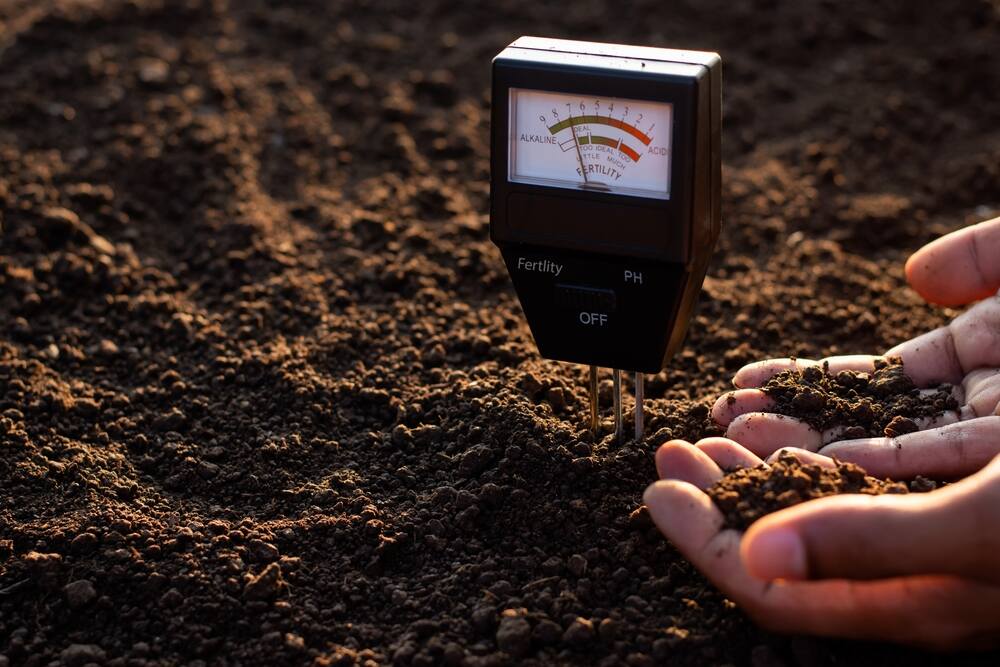
If you are using synthetic bottled nutes, as soon as you have finished reading this guide, go and buy a pH pen (so you know what the pH is) and a TDS or EC meter (so you know how much nutes are in your water). Without these, you are setting yourself up for failure, and essentially working blind.
Recovery time and what to expect after fixing Nutrient Burn
How long it takes for a cannabis plant to recover?
That depends on how bad the nute burn was to begin with. If it is mild, five to ten days is usually enough for the plant to bounce back. If it is severe, recovery time can be up to twenty days.
What to do if the plant doesn’t recover?
If you don't see any improvement after twenty days or so, it's possible that the plant has suffered irreversible damage and may not recover. In this case, it's time to potentially cut your losses and start fresh.
How to promote new growth after nutrient burn?
There's no magic trick to promoting new growth after nutrient burn. Just make sure the plant is getting enough water and light, and the correct balance of nutrients. It may also help to give the plant a break from any added nutrients for a few days but be sure to monitor the plant closely during this time.
